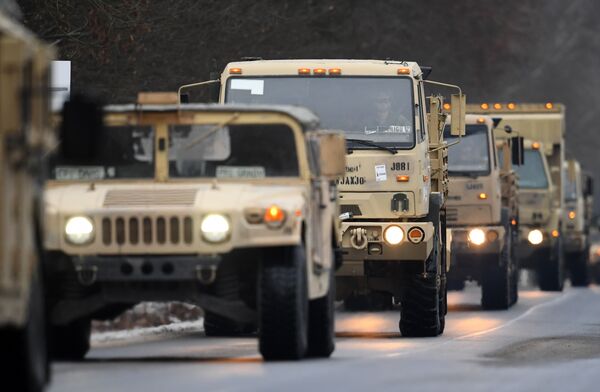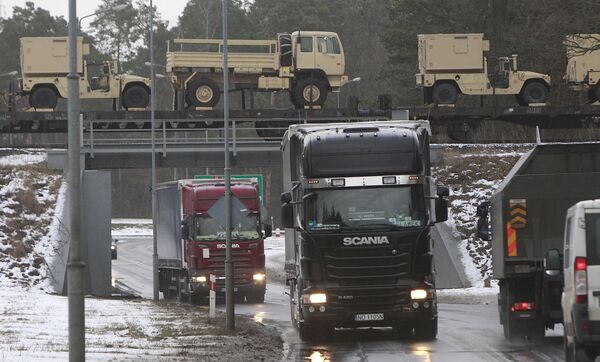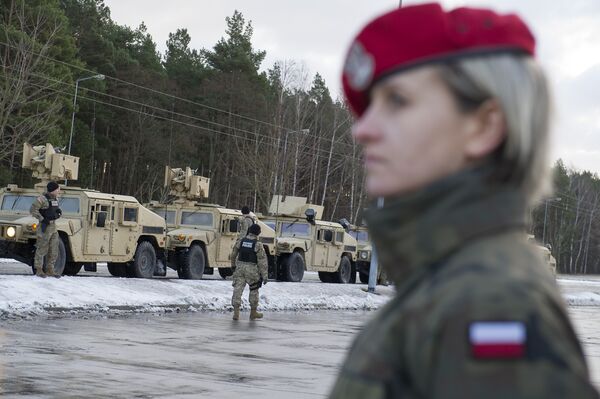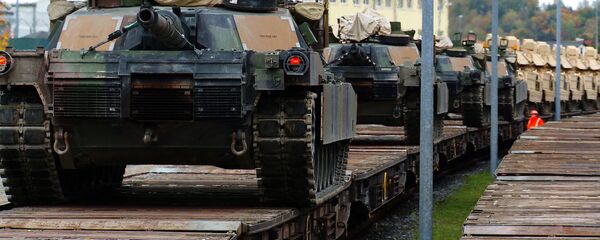More than 3,000 US soldiers, 80 main battle tanks and hundreds of armored vehicles have already arrived in Germany and are now being moved into Eastern Europe by road and rail, media reports said on Thursday.

Kremlin spokesman Dmitry Peskov has already expressed Moscow's negative attitude towards the move and said the Kremlin considers the buildup of US military presence in Europe near the Russian borders as a threat.
Commenting on the final move of the outgoing Obama administration, which comes right ahead of the scheduled inauguration of Donald Trump and at the very end of the presidential term of Barack Obama, Argentinian foreign policy analyst, Director of the Russian Observatory of the Argentine Center of International Studies (Centro Argentino de Estudios Internacionales, CAEI) Guillermo Galea called it a "demonstration of force" and an answer to the urge of such countries as Estonia, Latvia and Lithuania.

The move, he said, might come in the follow up to the accusation of Russia's alleged cyberattacks on the US.
This strategy and "form of diplomacy" pursued by the US, as well as the NATO deployment to the countries which serve as a buffer zone between Europe and Russia, seriously concern experts in international relations.

"NATO Secretary General Jens Stoltenberg has claimed that the move is simply 'reinforcements to the collective defense,' however we should understand that it is unprecedented since the end of the Cold War," Guillermo Galea told Sputnik.
"Despite saying that they don't have a common enemy and that this deployment is not aimed at any country, it is only too clear that the aim is to contain Russia," the analyst said.
NATO claims that these steps were planned a long time ago and it is just a "routine operation" however certain details prove otherwise, he added. He cited some US and NATO senior officials as speculating on the need to increase the NATO contingent in the region after Crimea's reunification with Russia.

"The timing of this deployment is important. If it were done two or three years ago it would have a different meaning to it being done right now," he said.
The expert however suggested that even though Germany is a "fundamental supporter" of such a move, the rise of the opposition in Germany and the coming inauguration of Donald Trump might make this deployments temporary.
Europe should decrease its tensions with Russia, while such steps only fuel it, he said.
However if Trump and German leftists want to build more mature relations with Russia, they should not look for a "solution by force", but rather a political one, otherwise there will be no end in sight to a continued military escalation, he stated.
However the political analyst further suggested that President Putin is a leader who is clever enough not to seem weak to prevent any further military escalation.
Never miss a story again — sign up to our Telegram channel and we'll keep you up to speed!



